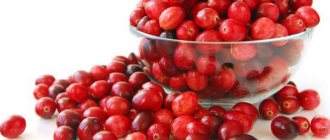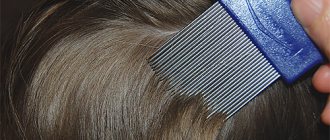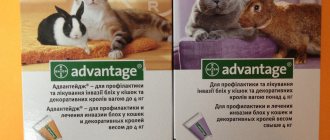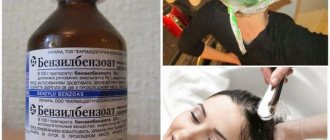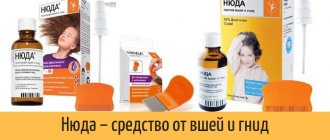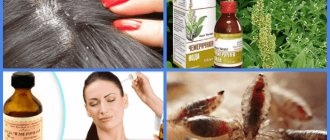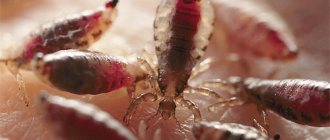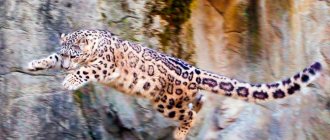Causes of lice in cows
Cows and calves can get different types of lice - adult animals are affected by insects of the order Haematopinus, and calves are affected by the calf louse Linognathus vituli. The most common fleas found on cows are:
- the short-headed louse is the largest individual of its species, reaching 4 millimeters in length;
- long-headed calf louse - it is not easy to notice it on the body of an animal, since the length of the louse is only 2 millimeters;
- The hair louse is the smallest parasite that infects cattle; males reach a length of 1.5 millimeters, and females only 1 millimeter.
The source of lice is infected cows and calves, if parasites at different stages of the life cycle are already present on their hair. The spread of insects occurs through close contact of livestock (crowded housing, during mating).
Cattle can also pick up lice indoors if infested cows were previously kept there. Parasites are often transmitted through livestock care items (poor sanitary and hygienic conditions).
The risk of developing lice in cows and calves increases during the winter season, since during stalling the cattle's immunity decreases, a lack of vitamins develops, and the skin during this period of the year is covered with a thick coat of hair. In the summer, when kept on pasture, the number of lice in cattle is sharply reduced due to improved feeding, increased immunity, insolation and dry air.
Destruction of lice with folk remedies
Owners of private household plots and peasant farms can destroy lice from cows and calves by using folk remedies used in the old days. Moreover, the use of these products does not have a harmful effect on the quality of milk produced.
- Rub wood ash into the skin for 2 weeks.
- Treatment of fur with kerosene.
- Dilute salt and vinegar in equal proportions, wipe hard-to-reach areas of the body until the parasites are completely destroyed;
- Application of birch tar. The tar is rubbed for 10 days in areas where animals are affected by lice (horns, neck, ridge, tail area).
- Washing the animal's fur for 20 days with a decoction of wormwood (keep the wormwood in 1 liter of hot water, add pharmaceutical hellebore water and tar soap).
Prevention. The main measures to prevent lice from appearing on a cow are: Maintaining constant cleanliness in the barn. Complete animal nutrition. Periodic washing and cleaning of the cow's skin. Using a 0.5% chlorophos solution to treat the room in which the cow is located, as well as the animal itself. It is recommended to treat the premises either before the stall period or in the summer.
Read also: Is it possible to give dill to rabbits?
Disinfection of premises and animal care items with insecticides. Occasional use of odorous substances that repel insects - Hexamide, Dicresil. Hexamide has a repellent effect, and Dicresil has an acaricidal and insecticidal effect.
Symptoms of lice
The louse pierces the cow's skin, damaging the capillaries, and injects liquid into the wound opening, which interferes with the normal blood clotting process and contains toxic substances. Due to the constant crawling of lice over the body and massive damage to the skin, animals become aggressive and agitated or, conversely, lethargic. Against the background of severe itching, cattle eat poorly, lose weight, and the risk of other systemic diseases increases.
Lice on a cow look like wingless dark insects with a thick outer shell; upon careful examination of the hair, in its thickness you can see white eggs of parasites - nits. They are firmly attached to the fur, it is difficult to remove or shake off nits, they reach a diameter of 1 millimeter, and are often located on the head, around the neck and horns, and tail. The main symptoms of pediculosis in cattle:
- altered behavior - the cow is worried and may suddenly jump out of place when lying down;
- trembling throughout the body - the animal tries to get rid of the itching, constantly rubbing against walls, fences and other objects;
- loss of appetite and body weight;
- decrease in milk yield due to constant itching and stress of cows;
- the presence of numerous bites on the animal’s skin;
- the appearance of anemia in calves, a noticeable lag in physical development.
See also
Causative agent and symptoms of malignant edema, treatment and preventionRead
In the most affected areas of the animal's skin, areas of eczema and boils, nodules and hemorrhages appear. Prolonged scratching of itchy surfaces with various objects leads to the fact that the livestock develops cellular infiltration - the sweat and sebaceous glands cannot fully function, which affects the functioning of the entire body. The situation is aggravated by the fact that multiple pathogenic microorganisms penetrate into cracks and wounds on the animal’s skin.
Skin diseases of cows
Raising cows is not that easy. It is not enough to know what they eat and how to get milk from them. Cattle need careful care, as they are susceptible to various skin and infectious diseases. Creation of living and nutrition conditions to the fullest. Have the number of a veterinarian who can serve them for vaccinations and preventive examinations. But still, if the disease has overtaken your animal, you do not need to postpone treatment until later, hoping for self-healing, but take the problem seriously.
Firstly, if a cow has obvious skin diseases, the first step is to isolate it from the rest of the herd. Otherwise, an outbreak of the disease among the entire livestock cannot be avoided.
Veterinarians often prescribe owners self-treatment with prescribed medications. Problems such as scabies, lichen, mites, lice are not uncommon among households and cause very severe itching in the affected individual, which interferes with normal nutrition and ultimately reduces productivity.
The disease trichophytosis, or as everyone is used to saying, lichen, is a common pathological reaction to skin damage by a fungus. In cows, this manifests itself as pain and discomfort at the site of the lesion. It spreads rapidly and can even be transmitted to humans.
The main cause of the disease is the infectious animals with which the cow had contact, and the hygiene of the animal also plays an important role. The fungus can also enter the body through microcracks and wounds on the skin. The presence of lichen in livestock can be detected with the naked eye.
In the affected area, the first thing that appears is peeling, then crusts appear, and the hair begins to fall off. On the skin, the clinical picture will begin to appear in a week, the causative agent of lichen is the trichophyton fungus, it acts in the cells of the epidermis and blocks the hair follicles.
In addition to external signs, lichen has a negative effect on the general condition of the cow. She loses weight, young animals lag behind in development, and there is a decline in milk production and reproduction.
The incubation period is up to 28 days. The main diagnostic criterion is the appearance of tubercles with the death of skin cells and hair loss. In small calves, the head area is primarily affected (circles around the eyes, mouth, forehead, ears). Adult cows have these manifestations throughout the body (neck, back, thoracic region).
Adults suffer from superficial and erased lesions, while calves suffer from follicular lesions. The vesicular shape is characteristic of the perineum and inner thighs.
Complicating treatment is the fact that fungal spores are quite resistant to environmental influences. They can exist on fallen skin crusts for years. When exposed to very high temperatures, they die only after three minutes. Acid-based disinfectants only take effect after twenty minutes.
The treatment should be handled by a veterinarian, he will determine the form and prescribe the best remedy. Today, several simple ways to combat the disease are used:
For the entire duration of treatment, you need to regularly disinfect the room where the sick animal lives.
Scientifically called Demadecosis, the causative agent in cattle is the demodex mite. This parasite actively multiplies on the sebaceous glands and hair follicles of the skin, creating colonies there, with more than a thousand mites in one. In recent years, the incidence of mange has increased greatly, and not only from cows, but also from other domestic animals. Since the transmission mechanism is contact, the sick animal must be isolated from the rest for the duration of treatment.
Manifestations of scabies are more typical in the neck and head, back and chest areas. In these places you can observe small tubercles up to a centimeter in diameter, with a wet surface. When pressed, a grayish-white liquid flows out, which is infested with parasites; it is used for microscopic examination. In cows, scabies may not be accompanied by itching, so this study has great diagnostic value.
The disease can be treated by the following means:
- 5% Decryzil emulsion with 1% Chlorophos solution, treat affected areas 5-7 times a day.
- Subcutaneous injections of Ivermectin 0.2 grams per kilogram of weight.
- Sevin suspension 1% for treating the animal until complete recovery.
Prevention consists of routine examinations of the animal by a veterinarian; he is able to identify signs in the early stages, which will allow timely isolation of the sick cow.
Wingless insects are permanent parasites. They have features in the form of an elongated and flattened body in the dorso-abdominal direction, and a narrowed head. They parasitize animals with thick fur, especially often in winter. Lice actively act on the host’s skin, feeding on his blood; after each sucking, they lay eggs (nits) in the root part of the hair.
Read also: Aberdeen Angus cow breed
When they bite, they injure the skin and introduce toxic saliva into the wound, which has an irritating effect. The skin begins to itch very much, and frequent scratching leads to dermatitis; with massive lice infestation, the animal becomes restless. Places where there is a strong accumulation of lice become bald over time.
Young calves are most likely to suffer from lice.
The animal must be isolated, as lice can jump from one cow to another. Insecticides are actively used for treatment:
- 5% Chlorophos - spray livestock to remove lice, but since nits are more resistant to its action, you need to re-treat it after 5-6 days.
- In winter, Chlorophos is used at a 3% concentration.
- Folk remedies for removing lice are: a solution of salt with vinegar, and treatment with kerosene.
- Some people use ordinary ash, which they rub on the animal.
The great advantage of folk remedies is that the milk from the animal remains edible, which becomes impossible with drug treatment. When a cow is given medicines, the milk is also saturated with them, so it can be consumed when the cattle has fully recovered.
But it is still not recommended to self-medicate, since the effect may not be obtained, and the disease will progress to such an extent that it will be impossible to cure it, and the owner will lose part of the farm.
How to get rid of parasites
To solve the problem of lice in cows, complex therapy methods are used. If there are several infected heads of cattle, treatment of the entire herd is required, since the probability of infection of the rest of the livestock is almost 100%.
Expert opinion
Zarechny Maxim Valerievich
Agronomist with 12 years of experience. Our best country expert.
Ask a Question
If insecticides are used in therapy, milk milked from a cow cannot be consumed by people and calves - it should be poured out within 5 days after treatment of the cattle.
Powders
The most common powder for eliminating lice from cattle is “Chlorophos”, it is a contact insecticide. To remove parasites from cows, powder at a concentration of 80% or 50% must be diluted with water to obtain a 0.5% solution, sprayed, rubbed into the skin or watered every 2-3 days. Pregnant cows and small calves should not be treated with Chlorophos.
Aerosols
The most effective sprays against lice are:
- “Ivermek” - the components of the drug help destroy lice, eliminate itching, pain, and accelerate wound healing;
- “Stomazan” - the emulsion should be diluted with water and applied with a spray bottle to the coat (from 500 milliliters to 1.5 liters per animal);
- “Butox” - apply the solution with a spray bottle, wash off after two weeks, re-treat after seven days;
- “Sebacil” – soak the cow’s hair generously with the product, rinse off with warm water after five to seven minutes;
- “Cyflunit Flock” is a spray with therapeutic and preventive properties. It is necessary to apply along the spine to protect against lice for up to a month.
See also
Why a calf may lose hair and methods of treatment, preventionRead
Treatment with a combination of sprays and injectable drugs against parasites - Ivermectin, Baymek, Clozatrem - gives a good effect.
Folk remedies
Effective folk remedies for lice:
- rubbing wood ash into the skin for 14 days;
- washing the wool with an antiparasitic decoction for at least three weeks - infuse wormwood in a liter of boiling water, add hellebore water, tar-based soap;
- treatment of lice-affected areas with kerosene and birch tar for 14 days.
The listed methods are safe for young calves and do not affect the taste of milked milk.
Destruction of parasites in calves
Calves suffer the disease much more severely than adults, so their treatment should be taken extremely seriously. If signs of lice are not noticed in time, they can lead to the death of the calf. The most common areas affected are the neck and tail. Lice in calves are treated with special aerosols, shampoos, drops and intramuscular injections.
Read also: How do a cat and a rabbit get along in the same apartment?
One of the most common and effective methods of treatment is the treatment of skin areas irritated by parasites with a 1% chlorophos solution. You can purchase emulsions of chlorpinene (1.5%) or creolin (1%) at the pharmacy. A 3% tobacco decoction helps a lot. All these products must be thoroughly rubbed into the calf’s body and the procedure repeated according to the following scheme: in the summer after 2 weeks, in the winter - after 23 days, in autumn and spring - after 17 days.
How to treat the room
The following products with antiseptic properties are used for spraying barns:
- sodium hydroxide;
- slaked lime;
- kerol;
- "Chlorophos";
- Tar oil
You can use a sulfur smoke bomb. During processing, cows must be kicked out of the stall.
Prevention measures
The best way to treat pediculosis and the subsequent addition of concomitant skin diseases to it is timely prevention, which includes:
- control of the quality of livestock nutrition - it is important to balance the diet, include vitamin supplements to strengthen the immune system;
- compliance with sanitary requirements in stalls - regular disposal of manure, replacement of bedding, protection of animals from drafts and dampness;
- periodic treatment with repellents of the favorite habitats of lice - the spine, tail, neck and head of the cow;
- regular treatment of the stall with antiseptic agents;
- routine examinations by a veterinarian, vaccination;
- monitoring the condition of the animal’s skin and coat, behavior, appetite, weight gain and physical development of calves.
The listed measures are not troublesome or expensive, but will allow you to prevent and timely detect pediculosis in cattle and select therapeutic methods in a timely manner.
To avoid infestation of cattle with lice, it is recommended to take preventive measures and treat the barn with antiseptic solutions before the stall period or in the summer. It is important to diagnose and begin to treat head lice in a timely manner, since massive lesions on the skin of young calves can lead to the death of livestock.
What do lice look like on cows?
Lice are wingless small insects that parasitize, among other animals, cows. Their size, depending on the type, ranges from 1 to 5 mm. The body of the louse is elongated, flattened towards the back and abdomen.
The head is narrowed at the front. The color of an adult ectoparasite is usually inconspicuous. They feed exclusively on blood, every 2 hours, the blood suction process lasts about 40 minutes. The life cycle of lice, like other insects, consists of several stages. After sucking blood, the louse lays eggs called nits. They, in turn, stick to the root section of the hair.
After one and a half to two weeks, larvae hatch from the nits - nymphs, which differ little from adult individuals, except perhaps in size, and immediately begin to parasitize. After 11–14 days, the nymphs become adult, sexually mature insects.
Ectoparasites do not form in the external environment, but under favorable conditions they can live for about 3–7 days. The localization of insects depends on the time of year.
During the cold season, lice look for warmer places on the cow’s body:
- at the base of the horns;
- in the upper parts of the mane, neck, back;
- in the groin area.
During the warm period, parasites spread throughout the animal’s body, and their places of “settlement” are the neck, ears, legs and shoulder blades.
Short-headed cow louse
Long-headed calf louse
This ectoparasite is only 2 mm long, dark in color, and lifespan is approximately 30 days. The insect is born 14 days after the adult female lays eggs. After 14–20 days, the nymph will grow into an adult louse. It is difficult to notice a long-headed calf louse on an animal’s body.
